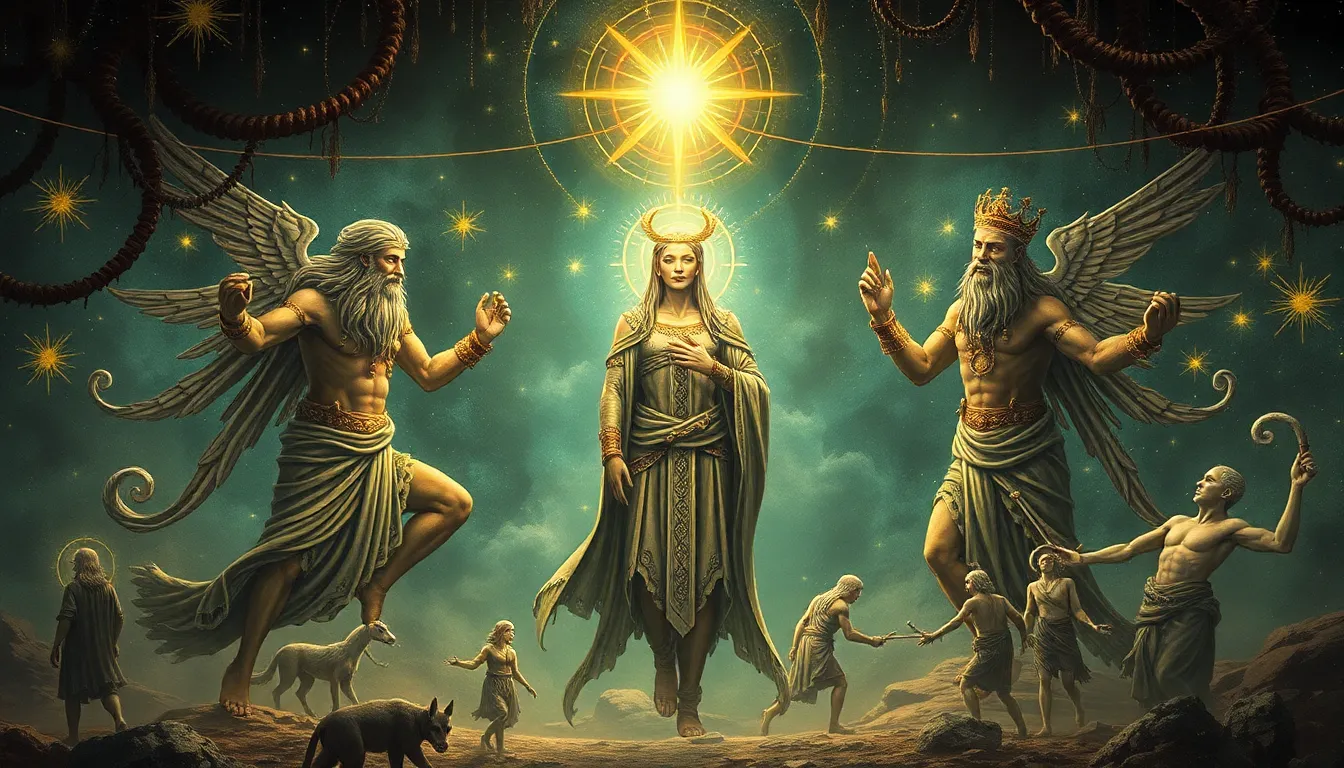The Power of Transformation: Redemption and Forgiveness in Māori Mythology
Māori mythology, a rich tapestry woven from ancient stories and beliefs, offers profound insights into the human experience. These tales, passed down through generations, explore themes of love, loss, courage, and sacrifice, often highlighting the importance of redemption and forgiveness. They are not simply entertaining stories; they are guides to living a meaningful and purposeful life, emphasizing the interconnectedness of all things and the power of transformation.
The Tapestry of Māori Mythology: A Rich Tapestry of Stories and Beliefs
Māori mythology is a vibrant and complex system of beliefs that encompasses a wide range of narratives, rituals, and traditions. The stories are deeply embedded in the Māori worldview, providing a framework for understanding the natural world, human relationships, and the spiritual realm. These myths are not merely fantastical tales but powerful tools for teaching, inspiring, and guiding the Māori people. They offer explanations for natural phenomena, explore the origins of humanity, and provide lessons on ethics, morality, and social responsibility.
The Key Concepts: Redemption and Forgiveness in Māori Culture
Central to Māori mythology are the concepts of redemption and forgiveness. These ideas are woven throughout the stories, demonstrating the power of transformation and the importance of reconciliation. Redemption refers to the act of making amends for wrongdoing, while forgiveness involves releasing anger and resentment towards another person. While these concepts may seem simple, they carry profound implications in Māori culture, where community and harmony are highly valued.
The Concept of Mana: The Power and Responsibility of Individual Action
Mana is a key concept in Māori culture and mythology. It refers to the power, prestige, and authority that an individual or a group possesses. Mana is not simply an innate quality but is earned through actions, achievements, and adherence to traditional values. Individuals with high mana are respected and influential within their community. However, mana can also be lost through negative actions or a lack of respect for others. This concept emphasizes the importance of individual responsibility and the impact our actions have on our relationships and standing within the community.
The Role of Attua: Divine Beings and Their Influence on Human Affairs
Attua, or gods, play a significant role in Māori mythology. These divine beings are not distant and aloof but actively involved in the lives of humans. They are responsible for creating the world, shaping the landscape, and influencing the course of human events. Stories about attua feature themes of love, jealousy, betrayal, and forgiveness, reflecting the complexities of human nature. These narratives demonstrate the power of divine beings but also underscore the importance of human agency and moral responsibility.
The Significance of Tapu and Noa: The Sacred and the Profane in Māori Worldview
In Māori culture, the concepts of tapu and noa are fundamental to understanding their worldview and the significance of redemption and forgiveness. Tapu refers to sacredness, purity, and restriction, while noa represents the opposite – the profane, common, and unrestricted. These concepts are not rigid categories but exist on a spectrum, with objects, places, and individuals possessing varying degrees of tapu.
For example, certain areas, like burial grounds, are considered highly tapu, requiring specific rituals and restrictions to maintain their sacredness. This concept highlights the interconnectedness of the physical and spiritual realms and the importance of respecting sacred spaces. When tapu is violated, it creates an imbalance that can lead to sickness, misfortune, or even death.
Redemption and forgiveness often involve restoring balance after a tapu violation. Rituals, offerings, and apologies can help to cleanse individuals and the community from the effects of transgression. These acts of atonement demonstrate the importance of recognizing the sacredness of life and the consequences of our actions.
The Importance of Whakapapa: The Lineage and Connection to Ancestors
Whakapapa is a central concept in Māori culture, encompassing genealogy, lineage, and the interconnectedness of all things. It refers to the ancestral lines that connect individuals to their ancestors, the natural world, and the spiritual realm. This concept highlights the importance of understanding one’s place within the broader web of life and acknowledging the responsibilities that come with being part of a lineage.
Whakapapa plays a significant role in the understanding of redemption and forgiveness. It is believed that actions of ancestors can impact present generations, while the actions of present generations can impact future generations. This interconnectedness means that forgiveness is not simply a personal act but a collective responsibility.
In stories where ancestors have committed wrongdoings, redemption often involves a process of restoring balance and honoring the ancestors through rituals, stories, and actions. This process helps to heal the past and create a pathway for future generations to live in harmony.
Themes of Redemption: From Darkness to Light
Many Māori myths explore themes of redemption, highlighting the possibility of transformation from darkness to light. These stories often feature characters who have committed wrongdoings, but through acts of repentance, sacrifice, or service to others, they find a path to redemption.
One well-known myth is the story of Maui, a trickster god who is both revered and feared. In one version, Maui attempts to steal fire from the gods. While successful, he burns himself in the process, causing him immense pain. This act of transgression leads to a period of reflection and regret, ultimately leading Maui to a place of redemption. His willingness to acknowledge his mistakes and endure the consequences demonstrates the importance of taking responsibility for one's actions.
Themes of Forgiveness: Healing and Reconciliation
Forgiveness is also a prominent theme in Māori mythology, highlighting the power of healing and reconciliation. Many stories feature characters who have been wronged but choose to forgive their transgressors, ultimately creating a path towards peace and harmony.
In the story of "The Star-Wrasse and the Stingray," a young stingray is caught and killed, leading to a terrible storm. The spirit of the stingray demands revenge, but the star-wrasse intervenes, begging the stingray's spirit to forgive the humans. Ultimately, the stingray's spirit agrees, and the storm subsides. This story emphasizes the power of forgiveness to restore balance and prevent further harm.
The Enduring Relevance: Modern Applications of Māori Myths for Healing and Transformation
Māori myths continue to hold relevance for modern audiences, providing valuable insights into the complexities of human nature and the importance of redemption and forgiveness. The themes present in these stories can be applied to contemporary issues, offering wisdom and guidance for healing, reconciliation, and building stronger communities.
The concepts of mana, tapu, and whakapapa offer frameworks for understanding individual responsibility, the interconnectedness of all things, and the impact of past actions on present and future generations. By exploring these concepts, we can gain a deeper appreciation for the value of forgiveness, compassion, and the power of transformation.
FAQ
What is the significance of redemption and forgiveness in Māori mythology?
Redemption and forgiveness are central themes in Māori mythology. They emphasize the possibility of transformation, the importance of taking responsibility for actions, and the power of healing and reconciliation. These themes are deeply woven into Māori culture and worldview.
How do the concepts of “tapu” and “noa” relate to redemption and forgiveness?
"Tapu" and "noa" represent sacredness and profanity, respectively. When "tapu" is violated, it creates an imbalance that requires restoration through acts of redemption and forgiveness.
What is the role of “whakapapa” in understanding redemption and forgiveness?
"Whakapapa" is the concept of lineage and interconnectedness. It highlights the impact of ancestral actions on present and future generations, emphasizing the collective responsibility for forgiveness.
How are the themes of redemption and forgiveness portrayed in Māori myths?
Māori myths often feature characters who have committed wrongdoings but find a path to redemption through acts of repentance, sacrifice, or service to others. The stories also highlight the power of forgiveness to restore balance and prevent further harm.
What is the relevance of Māori mythology for modern audiences?
Māori mythology offers valuable insights into human nature, the importance of redemption and forgiveness, and the complexities of relationships. The themes present in these stories can be applied to contemporary issues, providing wisdom and guidance for healing and building stronger communities.



